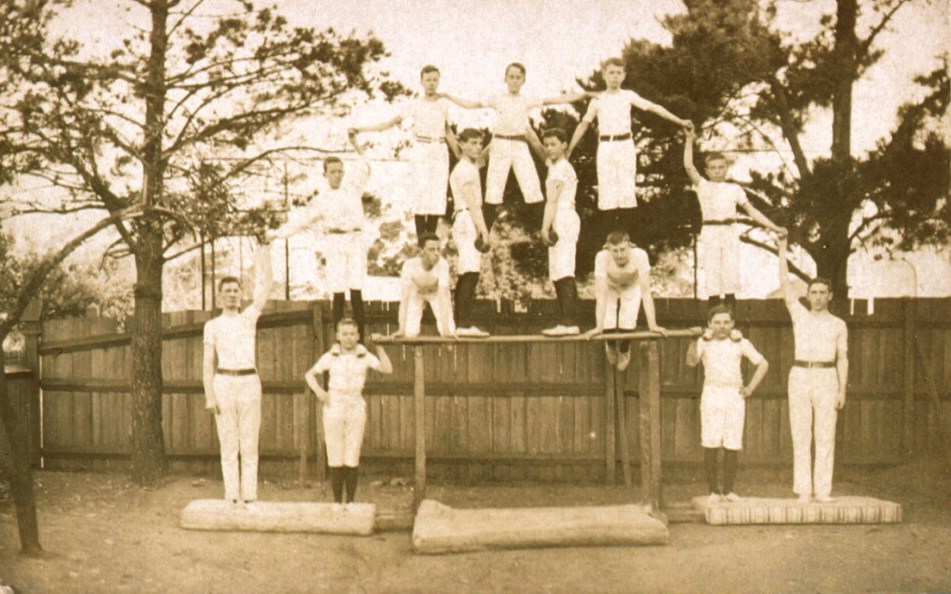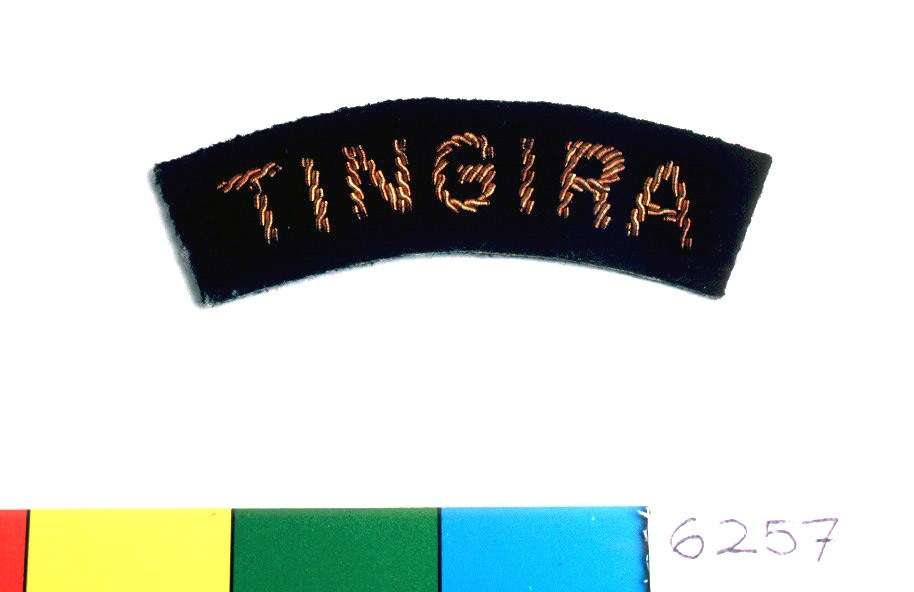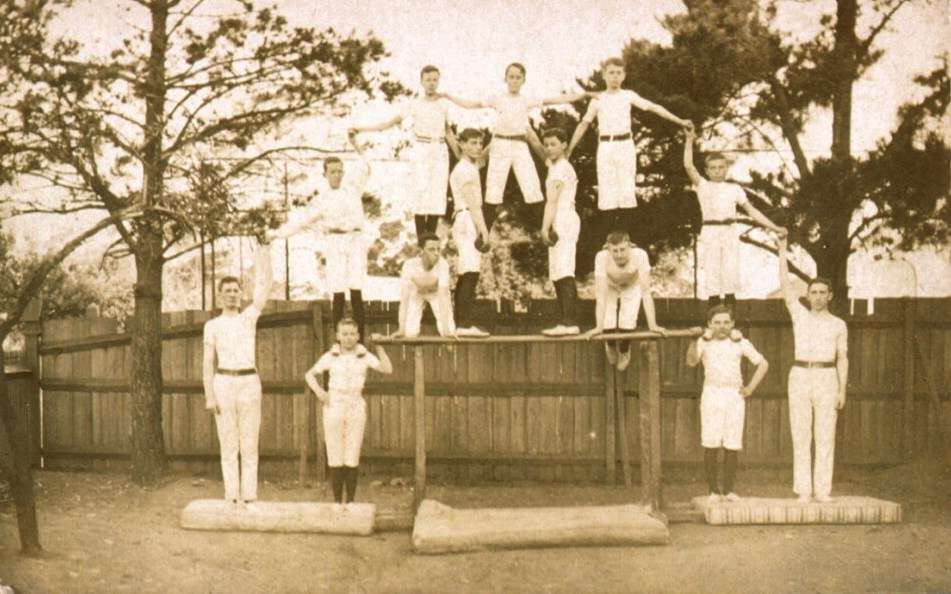
Tingira was 55 years old at the time of its commissioning into the RAN, and prior to this point had had a long career, beginning life in Scotland in 1866 as the clipper sailing ship Sobraon.
For many years Sobraon was used on the migration route between England and Australia. The vessel also carried cargo between the two countries but was mainly known for being a comfortable and modern passenger ship. However this was all to change in 1891 when Sobraon was sold to the New South Wales Government for use as a floating reformatory for boys.
Sobraon underwent a refit in Cockatoo Island and in 1892 entered its new role as an industrial school ship for underprivileged or destitute boys, preparing them for a life in the navy or a career as merchant seamen. Over a 20 year period, the ship was moored off Cockatoo Island and saw some 4,000 boys live and train on its decks.

One of two TINGIRA shoulder flashes. Possibly ex HMAS LEEUWIN, where TINGIRA flashes were worn by new cadets. c 1914 ANMM Collection Gift from R M Nicholls
Then, in 1911, the newly founded Royal Australian Navy purchased Sobraon for use as a training ship and commissioned the vessel under the name Tingira (pronounced ‘Tinguy-rah’). Tingira means ‘open sea’ or just ‘the sea’ and was the name of an Aboriginal tribe which lived in the vicinity of the coastal area of southern Queensland and northern NSW. Despite the name however, and the fact that those who trained in the vessel went to sea, Tingira did not and remained stationed at its moorings in Rose Bay, Sydney, for the next fifteen years.
During the vessel’s service as the Royal Australian Navy’s first training ship, Tingira hosted around 200 boys at any one time. The boys would enter service around the age of 14 (so-called Australia’s ‘naval babies‘) and spend twelve months on Tingira before heading to sea to complete their training. Between Tingira’s first intake in 1912 and the vessel’s decommissioning in 1927, over 3,000 boys underwent their naval training onboard. Tingira trainees developed an excellent reputation in the early years of the RAN and many went on to serve with distinction in the conflicts of the 20th century. Several ex-HMAS Tingira boys participated in Australia’s first naval battle in late 1914 when HMAS Sydney sank the German raider Emden off Cocos Island in WW1.

Photographic postcard depicting HMAS TINGIRA Cadets, Ascot Vale. c 1912 ANMM Collection 00001594
Tingira had initially provided a comfortable journey for many early migrants to Australia before becoming home to many young men, whether as Sobraon or Tingira. For 36 years the vessel had also been a prominent feature at its moorings in Sydney Harbour near Cockatoo Island and later Rose Bay. It is perhaps not surprising then, that after Tingira’s decommissioning from the RAN there was a swell of support to save the vessel from being scrapped and to find some way of commemorating its long heritage.
In 1929 Tingira was bought by a private owner before being sold again in 1935. The vessel’s new owners intended on converting the ship into a floating museum, however the project ran into financial difficulties and sadly Tingira was broken up in 1942. It was the end of an era for the Royal Australian Navy’s first training ship and an icon of our naval heritage.
Sons of our Navy New
Just the class of Aussies
To show what we can do
Tingira Boys, Nippers of our Sea –
To safeguard in the future
Australia’s destiny.
God bless you happy youngsters,
Alert and cheery band,
May “Tingira” ever be
A mascot of “Our Land”.
The WA&M,A&P Gazette, 11 November 1921
Penny Hyde
![HMAS TINGIRA, Rose Bay c 1920. Photographer William Hall. ANMM Collection ANMS1092[083]](https://s3-ap-southeast-2.amazonaws.com/anmm-data/blog/2013/10/07/8099067140_11dd336c60_b.jpg)
